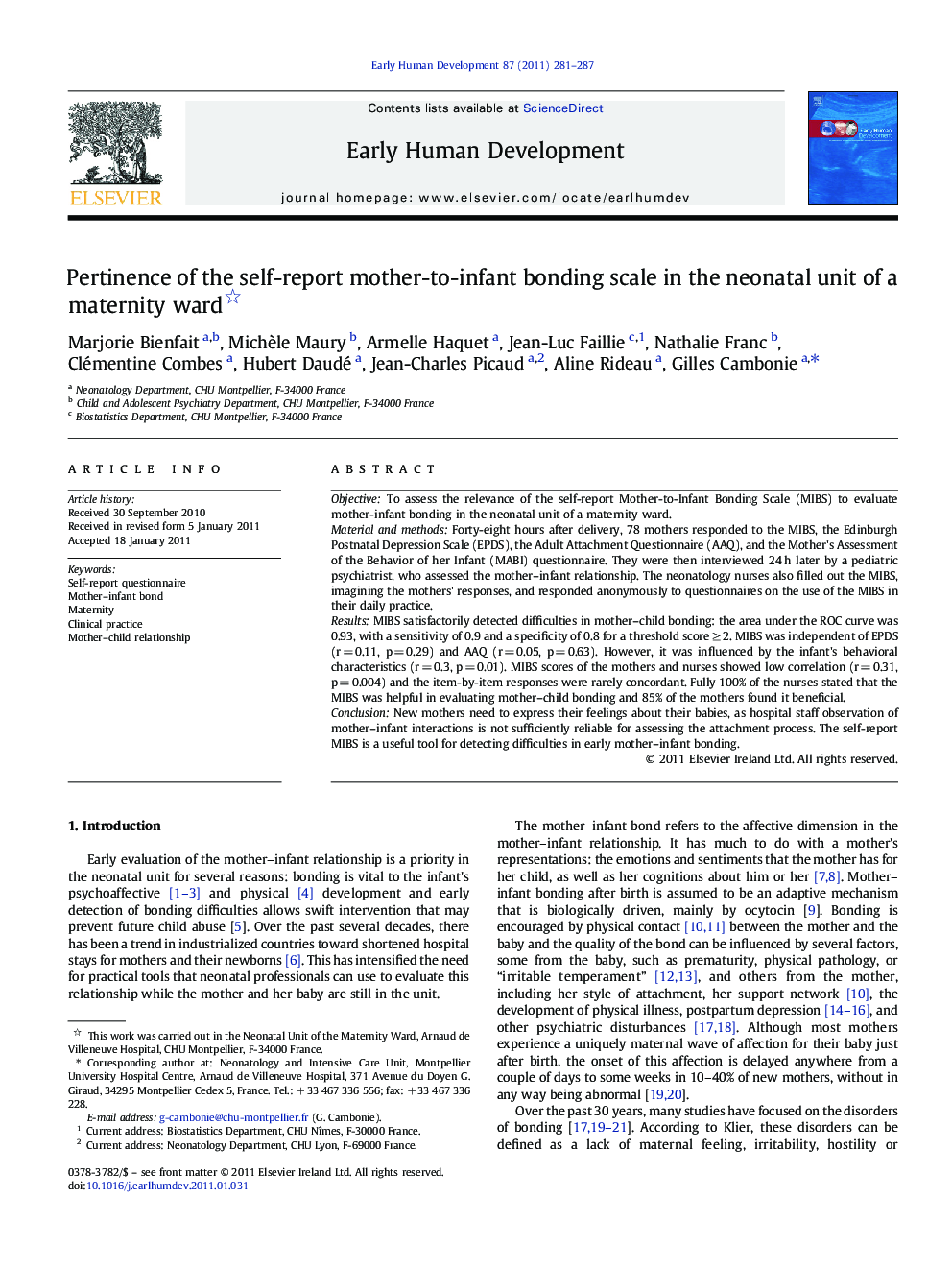| Article ID | Journal | Published Year | Pages | File Type |
|---|---|---|---|---|
| 6172207 | Early Human Development | 2011 | 7 Pages |
ObjectiveTo assess the relevance of the self-report Mother-to-Infant Bonding Scale (MIBS) to evaluate mother-infant bonding in the neonatal unit of a maternity ward.Material and methodsForty-eight hours after delivery, 78 mothers responded to the MIBS, the Edinburgh Postnatal Depression Scale (EPDS), the Adult Attachment Questionnaire (AAQ), and the Mother's Assessment of the Behavior of her Infant (MABI) questionnaire. They were then interviewed 24 h later by a pediatric psychiatrist, who assessed the mother-infant relationship. The neonatology nurses also filled out the MIBS, imagining the mothers' responses, and responded anonymously to questionnaires on the use of the MIBS in their daily practice.ResultsMIBS satisfactorily detected difficulties in mother-child bonding: the area under the ROC curve was 0.93, with a sensitivity of 0.9 and a specificity of 0.8 for a threshold score â¥Â 2. MIBS was independent of EPDS (r = 0.11, p = 0.29) and AAQ (r = 0.05, p = 0.63). However, it was influenced by the infant's behavioral characteristics (r = 0.3, p = 0.01). MIBS scores of the mothers and nurses showed low correlation (r = 0.31, p = 0.004) and the item-by-item responses were rarely concordant. Fully 100% of the nurses stated that the MIBS was helpful in evaluating mother-child bonding and 85% of the mothers found it beneficial.ConclusionNew mothers need to express their feelings about their babies, as hospital staff observation of mother-infant interactions is not sufficiently reliable for assessing the attachment process. The self-report MIBS is a useful tool for detecting difficulties in early mother-infant bonding.
